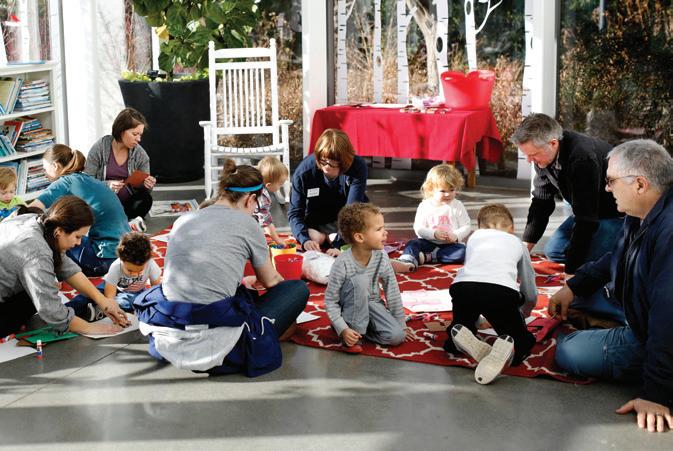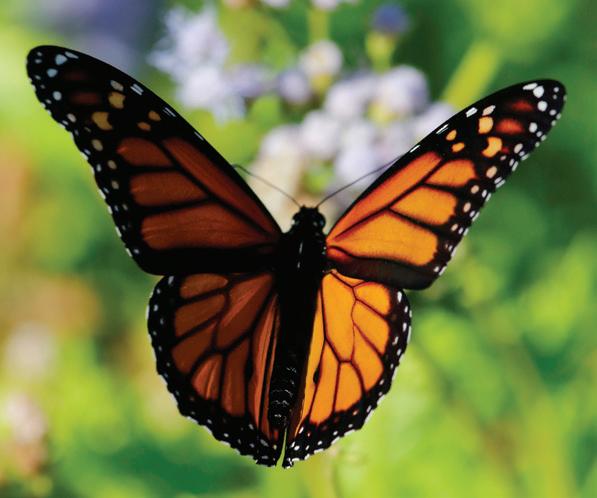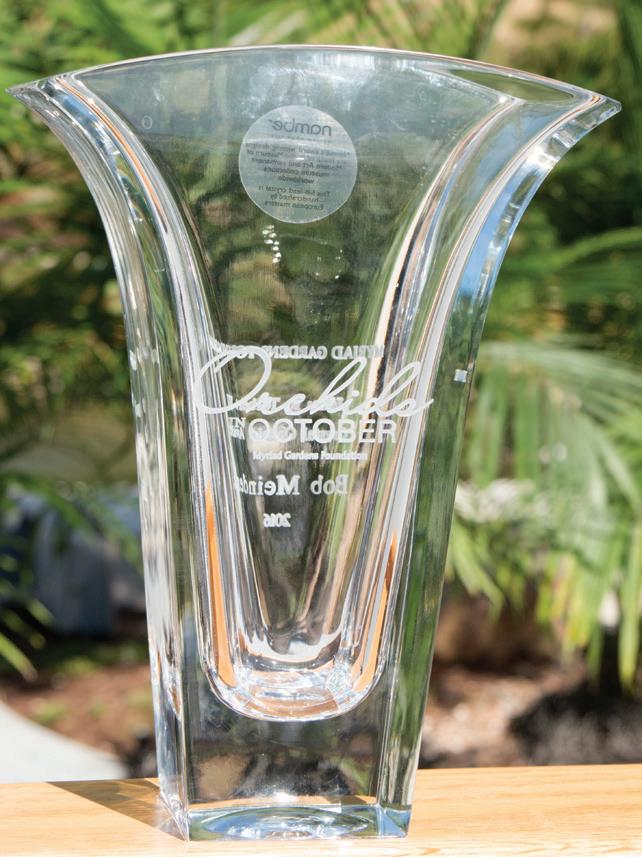
6 minute read
Horticulture Happenings
Horticulture Happenings Planting Bulbs is an Investment in Spring By Nate Tschaenn, Director of Horticulture
Unlike planting annuals or perennials, there is no instant payoff and add several thousand daffodils and other bulbs to planting bulbs. When the job is done, the ground looks to our spring displays. Daffodils and other bulbs the same as before. Planting bulbs is an can be left in the ground and will Nate Tschaenn investment in spring. They must be planted in rebloom each spring, but tulip bulbs are removed the fall because they require a chilling period in after flowering and planted again each year. order to initiate growth. So we put our faith in these unremarkable dormant bulbs and wait all There are several different types of tulip and daffodils winter in anticipation of spring. And it’s worth it. that bloom at different times. They are generally separated into early, mid or late blooming varieties. In early spring, when little else is blooming, Early, mid or late bulbs can be mixed together to they carpet the ground in masses of bright extend the bloom display or several different colors colors. The colorful displays provide relief and of the same type of bulb can be used to create a enjoyment to thousands of visitors, desperate more intense, but shorter, burst of color. A mix of for color to return to the landscape after the the early double tulip ‘Monte Carlo’ with the single bleak winter. Horticulture staff Kaitlin Bacon and Josh Berry plant bulbs in the Meinders Terrace. late tulip ‘Negrita’ proved quite popular. The purple ‘Negrita’ was just coming into bloom as the yellow Planning for the spring bulb display begins in ‘Monte Carlo’ was fully open. early summer of the previous year when the bulb order is placed. This fall, the hardworking horticulture staff will plant 35,000 tulips
The Time is Now! Planting Bulbs for Spring Blooms
Planting bulbs is quite simple. You can plant tulip or daffodils in an existing garden bed for early color before most perennials have started growing and before annuals are planted. They should be planted in well-drained soil in full or part sun. phosphorous fertilizer like bone meal into the bottom of the hole. Place the bulb in the hole with the pointy side up and the flat side, which has the roots, down. If you accidently plant upside down, the bulb will still flower but may be slightly delayed.
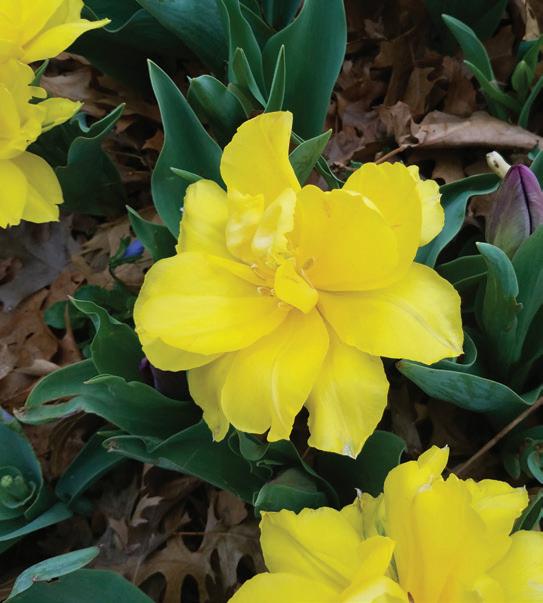
Before planting, it can be helpful to lay out the bulbs where you want them in order to keep track of where you have planted. Tulips should be planted four to six inches apart. Daffodils will spread a little each year and can be placed a little further apart at six to eight inches. Use a trowel to dig a hole six inches deep just slightly wider than the bulb. For perennial bulbs like daffodils, you can mix a high After flowering, you can remove the flower stalks from daffodils but allow the foliage to remain until it dies back on its own. Tulips do not usually return each year with much vigor, so they are usually treated as annuals and removed after flowering. If you plan on keeping for more than one year, fertilize when planting and in the spring with a slow release fertilizer.
What’s in Bloom Structure Now Available in the South Lobby
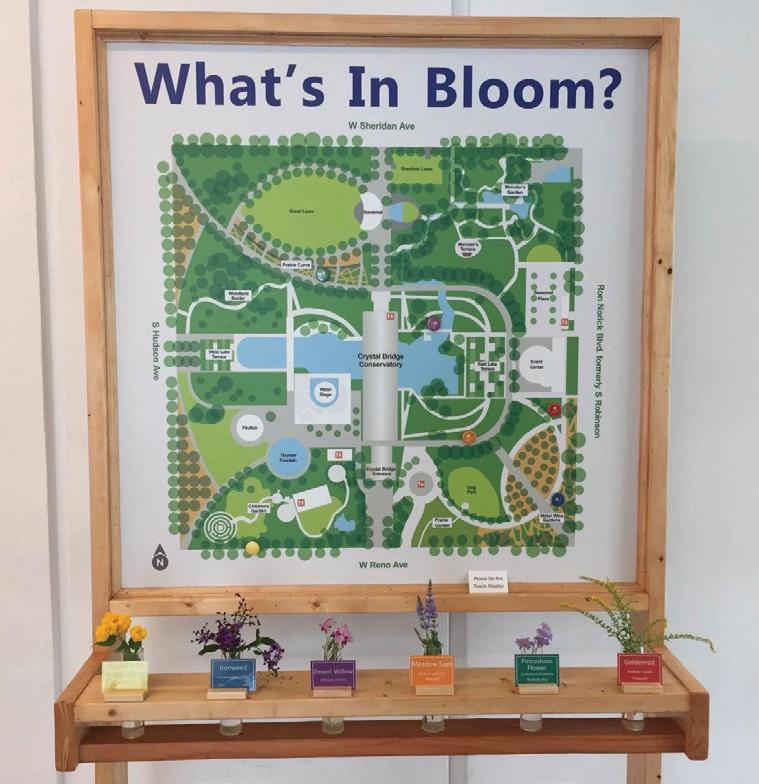
Come see what’s in bloom at the gardens. In an effort to help you locate our more colorful attractions, we have created a new display in the South Lobby entrance of the Crystal Bridge. By highlighting what plants are currently in bloom, you’ll be able to keep track of not only what to look for in our garden but also gain ideas for your own. By utilizing our color-coordinated map, you’ll be able to easily find the location of each flower on display. We hope that this will not only draw your attention to the beauty of the grounds but also showcase the variety of plant life we have here at the Myriad Gardens.

Buffalo Grass Newly Added to the Gardens
By Josh Berry, Horticulturist/Plant Recorder
Did your lawn beat the heat this summer? Did you have to mow every week, water every other day and fertilize more than you wanted to? If these questions give you some unease, buffalo grass may be an ideal alternative.
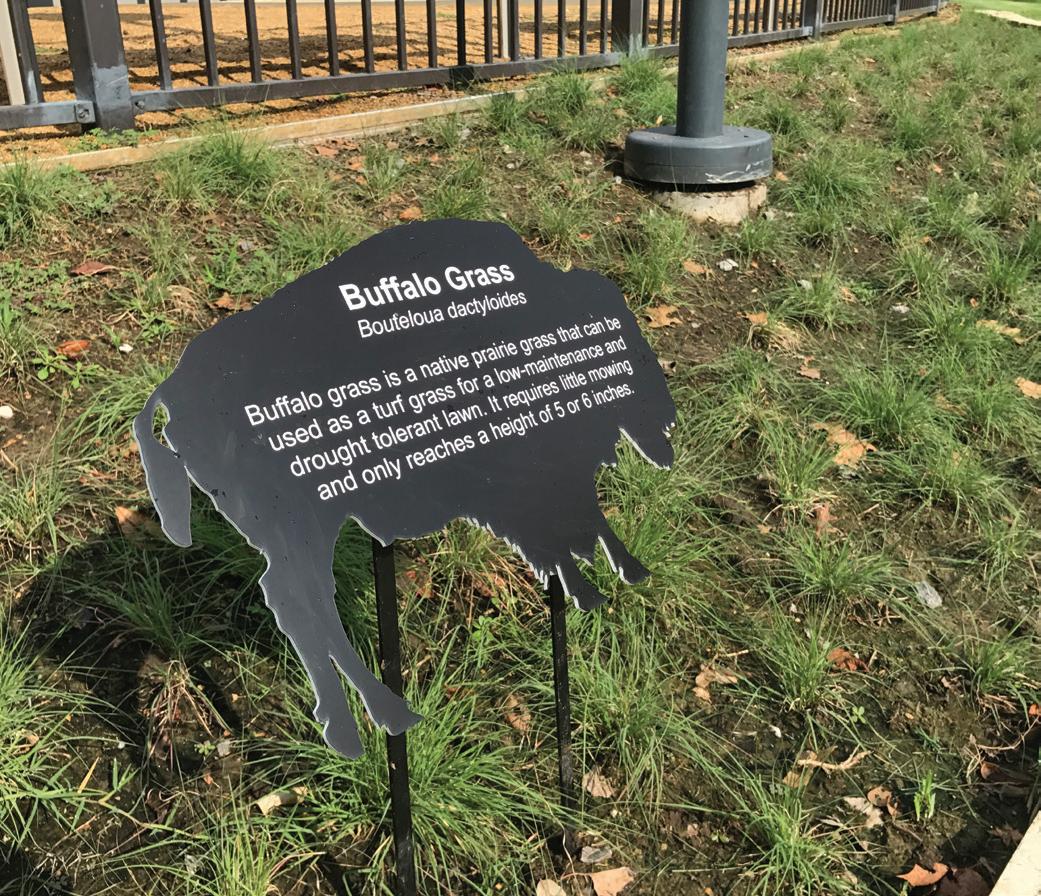
In developing our collection to be ever more diverse and highlight drought tolerant and native plants, the horticulture Josh Berry staff has installed a new planting of buffalo grass (Bouteloua dactyloides ‘Bowie’). The grass has a gray-green color and fine texture. Come check it out on the east side of the dog park.
Buffalo grass is a major component of the Great Plains short grass prairies. The roots can grow nearly eight feet deep, sustaining it during minimal precipitation. In contrast, Kentucky blue grass roots are just a few inches. Most cultivars of buffalo grass will be around six inches when fully grown. Since it spreads by stolons (stems that run along the ground), it will fill in quickly and can help hold soil on slopes.
Interested in growing this native grass as a turf? You should keep these things in mind. Buffalo grass is for full sun locations (6-8 hours of direct light); it will be very thin in the shade. Plant it during the spring, either with seed, sod or plugs, and keep well-watered when establishing. Most cultivars are sensitive to broadleaf herbicides; so hand weeding is ideal. It won’t handle high foot traffic. Choose it for areas with little activity or install stepping stones where you need them.
Plant Labels Get A Makeover
Our plant labels are getting a new look. New labels currently being added around the Gardens feature larger text and simple symbols on the bottom of the labels to highlight additional features of certain plants, such as pollinator friendly or drought tolerant. New labels were made possible in part thanks to a grant from the Oklahoma City Water Trust.

Butterfly = Attracts pollinators Bird = Attracts birds Water drop = Conserves water Emblem = Oklahoma Proven Oklahoma = Native to Oklahoma
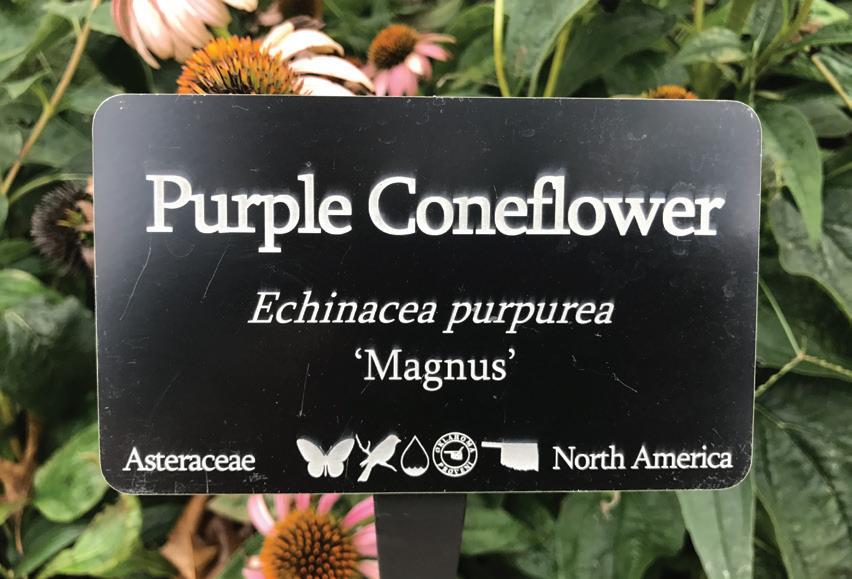
Weather Station New to Children’s Garden By Abby Curry, Children’s Garden Manager
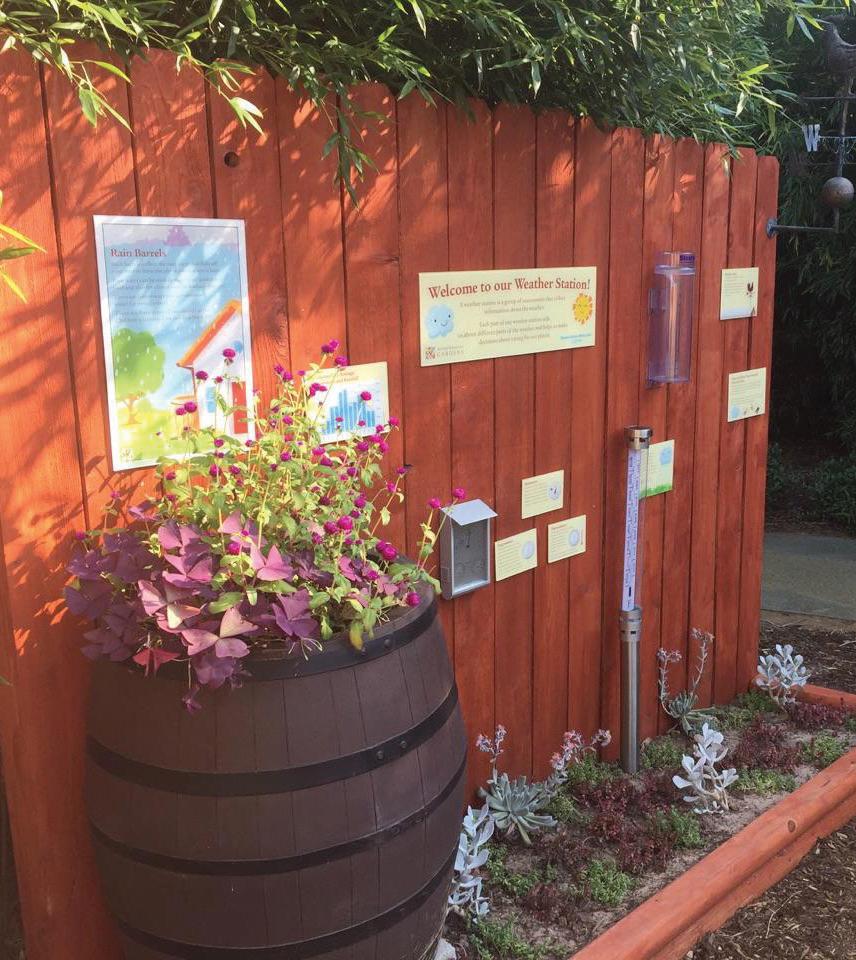
At the Myriad Gardens’ Children’s Garden, we always strive to supply ample opportunity for children to observe, learn, and of course have fun. Our newest addition to the Children’s Garden, the Weather Station, will give children and adults alike just such an opportunity. Visitors will be able to get an up-close look at how a rain barrel works, while also gaining some valuable tips on water conservation. Budding meteorologists Abby Curry will be able to predict changes in weather by checking the barometer, measure rainfall using the rain gauge and determine wind direction by observing our weathervane. The Weather Station also features a hygrometer and giant thermometer, perfect for little eyes. Children’s curiosity will no doubt be piqued as they actively observe Oklahoma’s ever-changing weather.


